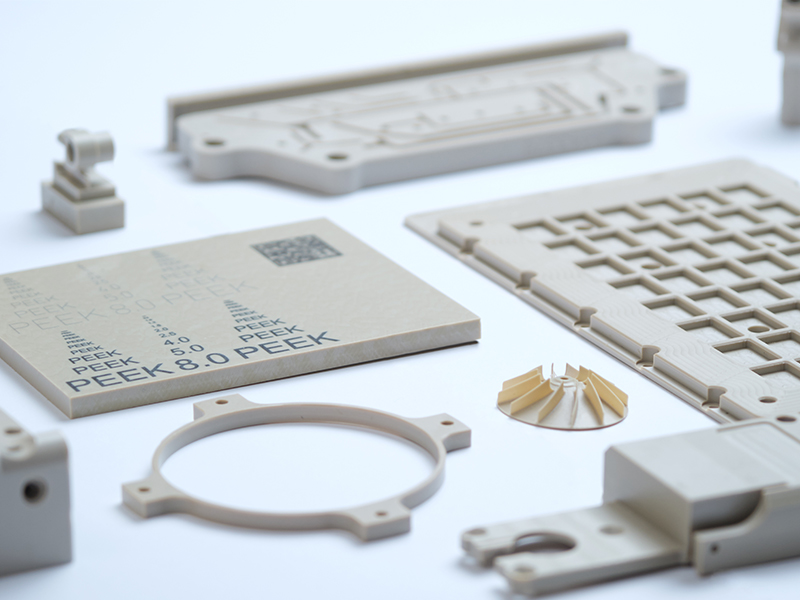PVDF is a high-performance fluoropolymer with excellent chemical resistance, thermal stability, electrical insulation properties, and mechanical strength. Pennwalt Corporation first developed it in the 1960s under the trade name “Kynar.” Since then, PVDF has found its way into countless applications across multiple industries.

The Remarkable Properties of PVDF
PVDF possesses several remarkable properties that make it highly desirable for various industrial applications. Let’s take a closer look at some of these key attributes:
1. Chemical Resistance
One of the most notable features of PVDF is its exceptional chemical resistance. It can withstand exposure to various corrosive substances, including acids, bases, solvents, and even oxidizing solid agents, without degrading or losing its integrity. This property makes PVDF ideal for manufacturing components in aggressive chemical environments.
2. Thermal Stability
PVDF exhibits excellent thermal stability with a high melting point exceeding 170°C (338°F). This allows it to maintain its structural integrity at elevated temperatures without undergoing any significant changes in physical or mechanical properties. As a result, PVDF can be used in applications where exposure to high temperatures is expected.
3. Electrical Insulation Properties
Another essential characteristic of PVDF is its superior electrical insulation properties. It possesses excellent dielectric strength and low dielectric constant, making it suitable for applications requiring insulation against high voltages and electrical conductivity. PVDF is widely used to manufacture cables, wires, and electronic components.
4. Mechanical Strength
PVDF exhibits impressive mechanical strength and durability, providing excellent resistance to impact, wear, and tear. Its high tensile strength allows it to withstand heavy loads and mechanical stress without deforming or breaking. This makes PVDF an ideal material for structural components in various industries.
5. Weatherability
PVDF is highly resistant to UV radiation and weathering effects, making it an excellent choice for outdoor applications that require long-term durability. It does not degrade or become brittle when exposed to sunlight or harsh environmental conditions, ensuring longevity even in challenging outdoor environments.
Applications of PVDF
The exceptional properties of PVDF have led to its extensive use across a wide range of industries. Let’s explore some of the critical applications where PVDF has proven to be highly valuable:
1. Chemical Processing Industry
PVDF’s outstanding chemical resistance makes it an ideal material for manufacturing pipes, fittings, valves, tanks, and other equipment used in the chemical processing industry. It can handle aggressive chemicals while maintaining its integrity over extended periods.
2. Electrical Industry
Due to its excellent electrical insulation properties and resistance to high temperatures, PVDF is widely used in the electrical industry for cable insulation, wire coatings, connectors, circuit board encapsulation materials, and other electronic components where electrical conductivity needs to be controlled effectively.
3. Water Treatment Systems
PVDF’s chemical resistance and ability to withstand harsh environmental conditions make it desirable for water treatment systems, including pipes, filters, membranes, and other components. PVFD membranes are also extensively used in reverse osmosis desalination plants due to their ability to retain ions during the filtration process
4. Architectural Coatings
PVFD coatings are the preferred choice for architectural applications due to their exceptional weatherability and resistance to UV radiation. They are used in facades, cladding, roofing, and other external surfaces of buildings as they provide long-lasting protection against corrosion, fading, and degradation.
5. Medical Industry
PVDF is widely used in the medical industry to manufacture components such as catheters, surgical instruments, implants, dialysis membranes, and drug delivery systems. PVDF’s biocompatibility and resistance to sterilization methods make it an ideal material for medical devices.
Polyvinylidene Fluoride (PVDF) material offers a unique combination of properties, making it highly versatile and valuable across various industries. Its exceptional chemical resistance, thermal stability, electrical insulation properties, and mechanical strength have made it a preferred choice for numerous applications ranging from the chemical processing industry to architectural coatings. The future looks promising, with further advancements expected in developing and applying PVDF material.

